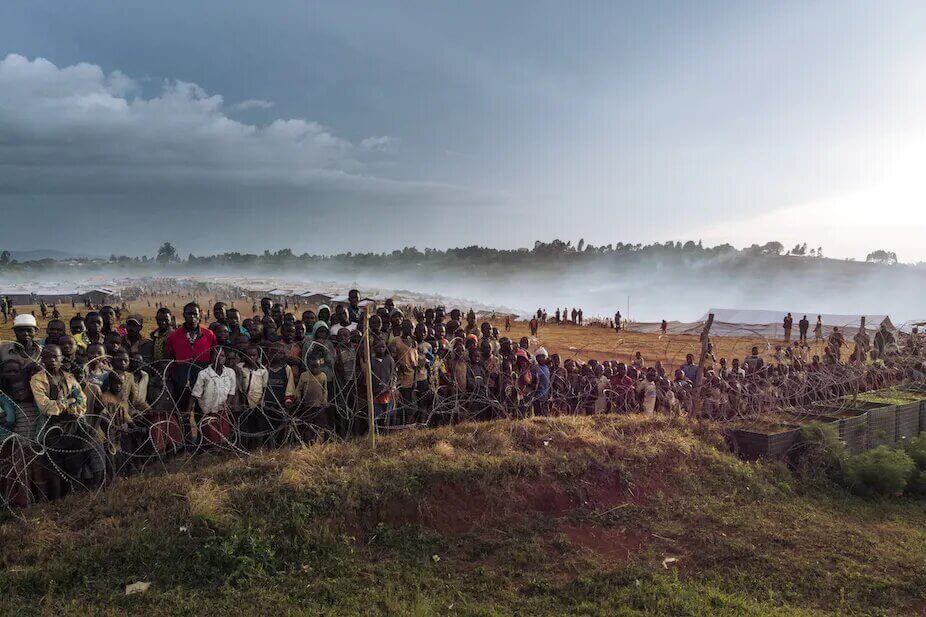According to the flagship annual report of the Internal Displacement Monitoring Centre (IDMC), the global number of internally displaced people (IDPs) reached 71.1 million by the end of 2022, a 20% rise over the previous year.
Key Findings
The Global Report on Internal Displacement (GRID) stated that in 2022 there was an unprecedented number of relocations, wherein individuals fled in search of refuge and safety — sometimes more than once. Internal displacements, or movements, reached 60.9 million during the year, 60% higher than in 2021 and the highest figure ever.
According to the reported statistics, the number of people displaced by conflict and violence nearly doubled to 28.3 million. The Ukraine conflict caused 16.9 million displacements — the largest number ever recorded for any country.
The La Niña weather phenomenon persisted for a third consecutive year, leading to record levels of flood displacements in countries including Pakistan, Nigeria and Brazil. It also fuelled the worst drought in Somalia, Ethiopia and Kenya, triggering 2.1 million movements.
Record high: More than 71 million people internally displaced worldwide in 2022.
— AFP News Agency (@AFP) May 11, 2023
A "perfect storm" of overlapping crises forced tens of millions to flee within their own countries last year, monitors reporthttps://t.co/M3NZ15w0d9#AFPGraphics pic.twitter.com/Ir4zKTkUTY
Conflict and violence have displaced 62.5 million people across 65 countries and territories by the end of 2022. The report states that disasters affected an additional 8.7 million people in 88 nations and regions.
Internal displacement is a global phenomenon, yet over three-quarters of all IDPs live in only ten countries: Syria, Afghanistan, the Democratic Republic of the Congo (DRC), Ukraine, Colombia, Ethiopia, Yemen, Nigeria, Somalia, and Sudan. Disasters and violence overlapped in numerous places in 2022, prolonging IDPs’ situations and causing relocations for some for the second or third time.
Sub-Saharan Africa, the Middle East, and North Africa had the most significant number of IDPs, as they did in the preceding ten years. Except for East Asia and the Pacific, all regions witnessed an increase in the numbers.
Nearly half of the year’s catastrophic events prompted fewer than 100 movements. Still, their scope and regional repercussions were substantial when considered collectively, as in nations like Indonesia, Malaysia, and Vietnam.
According to the report, monsoon floods in Pakistan triggered 25% of worldwide disaster displacements. In Somalia, 1.1 million people relocated as the country endured its worst drought in 40 years.
In the Democratic Republic of the Congo, 4 million people were displaced due to violence, 1.5 times more than in 2021. Internal displacements in Haiti reached 106,000, a fivefold increase from 2021 and the highest number ever recorded for the country.
Russia-Ukraine War Causes 60% of Global Conflict Displacement
Russia began its “special military operation” in Ukraine last year, bombing and attacking significant towns and cities, including Ukrainian capital Kyiv.
Internal displacement of civilians has been widespread with damage to the critical infrastructure and lack of essential services. The situation has escalated quickly, resulting in nearly 16.9 million displacements.
Evacuation calls began in the Donetsk region by the end of last July. They extended quickly to other frontline areas such as Kharkiv, Kerson, Mykolaiv and Zaporizhzhia to prevent further casualties. Authorities had organised the evacuation of more than 350,000 civilians from dangerous areas by the end of November.
National and international roganisations collaborated with volunteers to support IDPs and necessary community-based initiatives were scaled up nationwide. Such initiatives were useful in delivering timely aid to those in need, especially in areas most affected by the war and inaccessible to humanitarian organisations.
Internal Displacement and Food Security
GRID stated that the conflict has disrupted food systems and caused sharp rises in global oil, fertiliser, and food prices. Russia and Ukraine are among the main producers of fertiliser and grain, including maize and wheat. By the end of 2022, more than 182 million people were experiencing crisis-level or worse food insecurity.
Global food insecurity was already a concern due to the slow and uneven recovery from the COVID-19 pandemic, and was exacerbated by ingrained conflict, disasters, and displacement. Due in part to their dependence on food and fertiliser imports and international humanitarian assistance, low-income countries, many of which are dealing with internal displacement, were the most affected.

